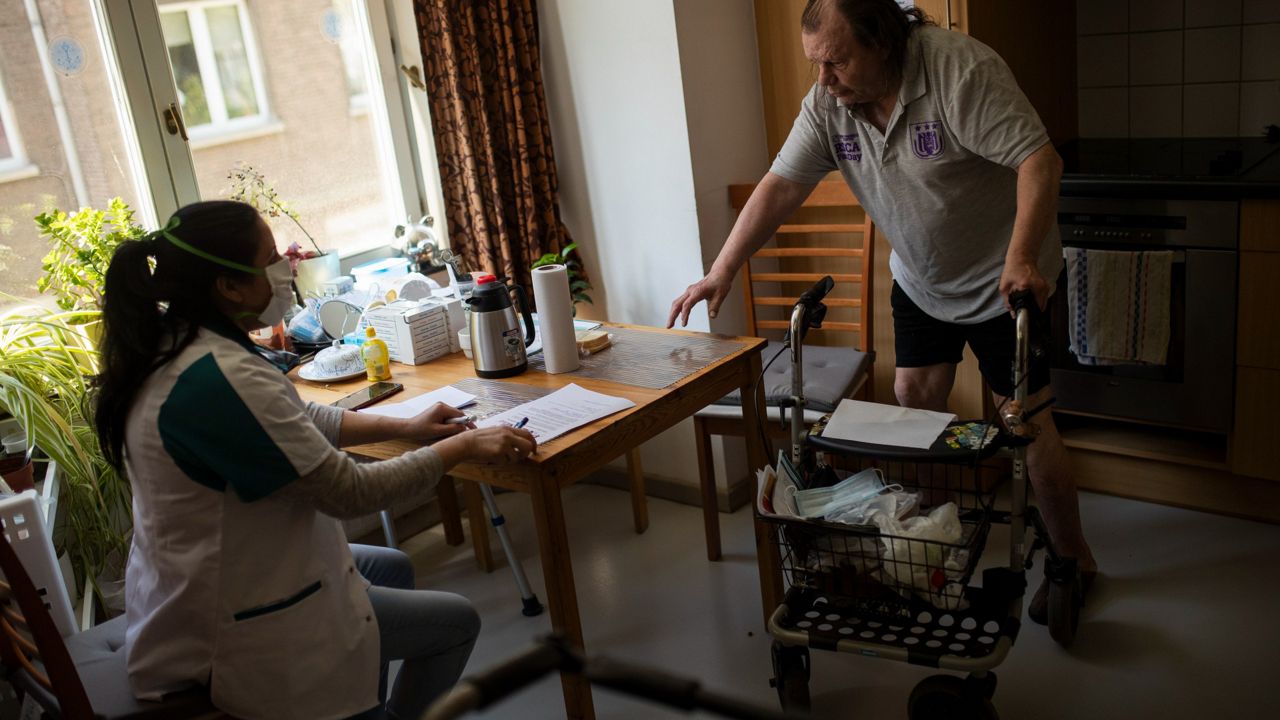Editor’s note: Second of a two-part series on Wisconsin’s caregiver crisis and the dilemmas facing the Baby Boomers’ generation. Read part 1 here.
APPLETON, Wis. — Michelle Graf has a message, and it’s loaded with tough love.
“Families are going to have to step up. Families are going to have to do more caregiving, even if they don’t want to,” said Graf, the owner and a senior care adviser at CarePatrol of the Fox Cities, a service that finds care solutions for seniors.
The message is for all families, but in particular for those of the Baby Boomers generation (people born between 1946 and 1964), where an estimated 75 million are expected to retire by 2030.
The ongoing caregiver crisis, a shortage of space, rising costs, people living longer, but needing long-term care earlier because of more health issues, are all challenges families of Boomers must face.
“The Baby Boomers didn’t take great care of themselves,” said Graf. “The Baby Boomers are not healthy. They’re needing care younger than the Greatest Generation did.”
Graf said, from her experience, the mid- to early 80s was the entry point where seniors of the Greatest Generation (defined as people born from 1901 to 1927) needed long-term care.
“But it’s getting into the 70s now,” she said.
And one other thing.
“The Baby Boomers weren’t great savers,” she said.
AARP reported in a 2019 survey by the Insured Retirement Institute, an organization that includes insurers, asset managers and 150,000 financial professionals, that 75% of boomers have not factored health-care costs into their retirement savings goals, and 85% percent haven’t included long-term care costs.
That same survey found 45% of boomers have no retirement savings. Those who do – more than 25% – have less than $100,000.
“I would tell every single person in the world, you better have at least two to three years of private pay available if you want to get care,” said Graf, who noted the cost of long-term care continues to rise at rate faster than inflation."
“There are different ways of calculating that, but it has to do with a combination of your income, plus some amount of assets, to get you to $6,000 a month for two to three years. If you want to get care, good care. Now, obviously, not everybody can do that. And there’s always care available. It’s just going to be a lot harder to find.”
Genworth, a long-term care financial company, reported in 2021 the average cost of assisted living in Wisconsin was $4,600 per month – an increase of 4.55% from 2020.
As for nursing homes, Genworth reported that in Wisconsin, the monthly cost is nearly 100% greater than that of assisted-living facilities. The average cost for a semi-private room is $9,022 per month, and a private room is $9,733 per month. These costs vary across the state.
That’s where businesses, like CarePatrol, factor in. They help find a space and give guidance on how you can stretch your money and assets.
Long-term care is not an easy conversation. Seniors will not want to acknowledge their limitations, and always want to stay in their homes as long as possible. Baby Boomers had fewer children, and maybe those children are spread out across the country. They’re also more likely to be divorced, putting more care responsibility on their children.
“And your wife’s working. You’re working,” said Kim Patterson, marketing director for CarePatrol. “You both have full-time jobs. How do we care for mom and dad?”
In most cases, Graf said neither the senior parent, or the children, want to face the reality before them.
“It’s the children too, because we’re all guilty,” said Graf. “Every child who has gone through this, where they saw their parents age, you do not see your parents as they are. You see them as they were.
“And that’s where the struggle is for families. They don’t want to plan for that.”
Both Graf and Patterson stressed the idea of being proactive, educating yourself and figuring out a plan to keep their senior loved ones in their own home as long as possible.
“A great piece of advice for Baby Boomers, or anybody. Make sure you have your Advanced Directives — a legal document that tells your doctor your wishes about your health care if you can’t decide yourself — completed,” Graf said. “As well as your power of attorney for finance, and your power of attorney for health care – these are really simple things to do.”
This is a quandary that doesn’t have any simple answers and, possibly, has no end in sight as Millennials and GenXers might face an even bleaker future. Costs will continue to rise, space will continue to shrink because of the shortage of caregivers.
Related Stories
“We still have 25% of the remaining beds vacant today,” said John Sauer, president and CEO of LeadingAge Wisconsin. It’s a nonprofit dedicated to advance the areas of long-term care, assisted living and retirement living.
In 2022, LeadingAge, along with three other Wisconsin health organizations, collaborated to produce "The Long-Term Care Workorce Crisis" report.
“So, we can go for some time with the current licensed bed capacity that the state has and meet the needs of the growing elderly population," Sauer said. "Especially the over 85 population before the state will need any additional nursing home beds.
“The real issue is how do we retain and attract staff to work in long-term care facilities such that we can meet the growing need for this care. It’s not a capacity issue. It’s really a workforce issue that is the limiting factor.”
Story idea? You can reach Mike Woods at 920-246-6321 or at: michael.t.woods1@charter.com



